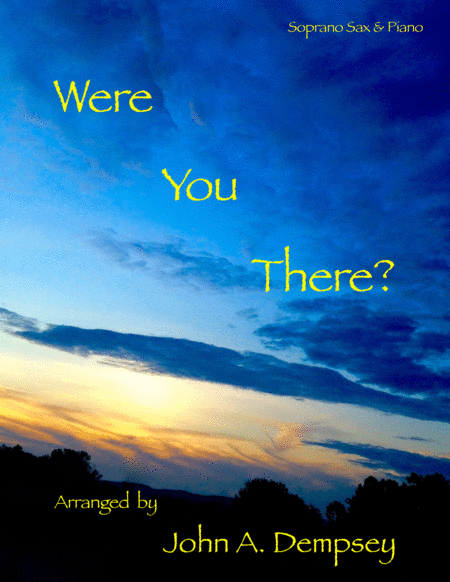Piano,Soprano Saxophone - Level 3 - Digital Download SKU: A0.523287 Composed by Traditional Spiritual, Frederic Chopin. Arranged by John A. Dempsey. Christian,Easter,Praise & Worship,Sacred,Spiritual. Score and part. 12 pages. John A. Dempsey #3422739. Published by John A. Dempsey (A0.523287). This duet for soprano sax and piano weaves the moving spiritual Were You There? into the rich tapestry of a beautifully tranquil Chopin etude, (Tristesse). Â Recommended for traditional Easter Sunday church services and other worship events, including Good Friday services and Easter sunrise worship as well as the Lord's Supper and Communion. Â Welcome as a prelude, postlude, an offertory, interlude, silent prayer accompaniment and special music. Â Appropriate year-round! Â 8 pages of music (that includes a separate two-page soprano sax part). Â Concert Key (Piano): F major. Â Soprano Sax Key: G major. Â Soprano Sax Level: Intermediate. Â Piano Level: Late Intermediate.
